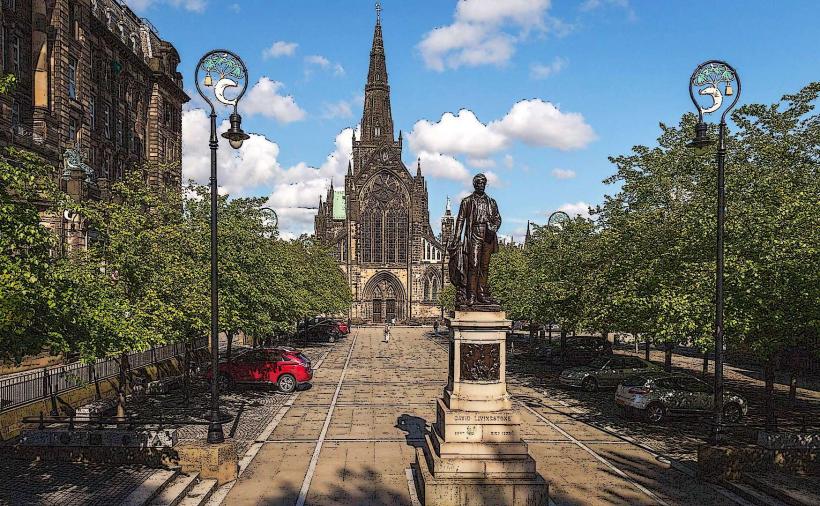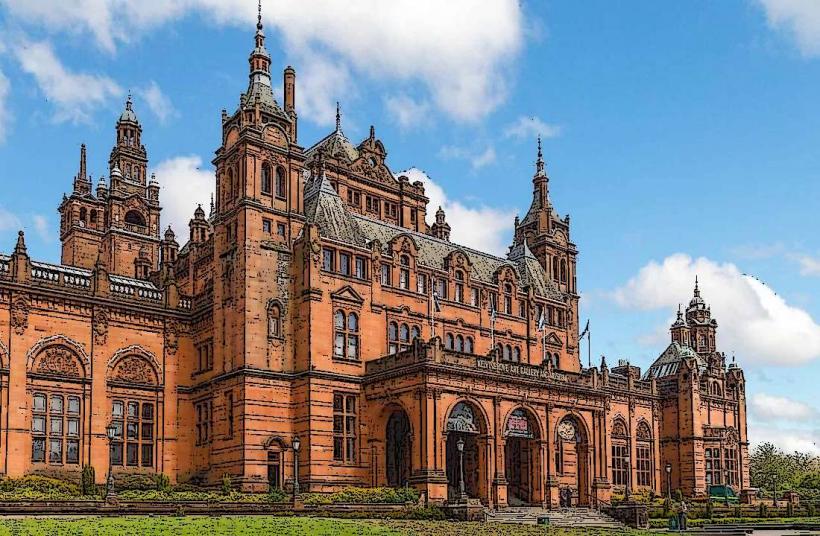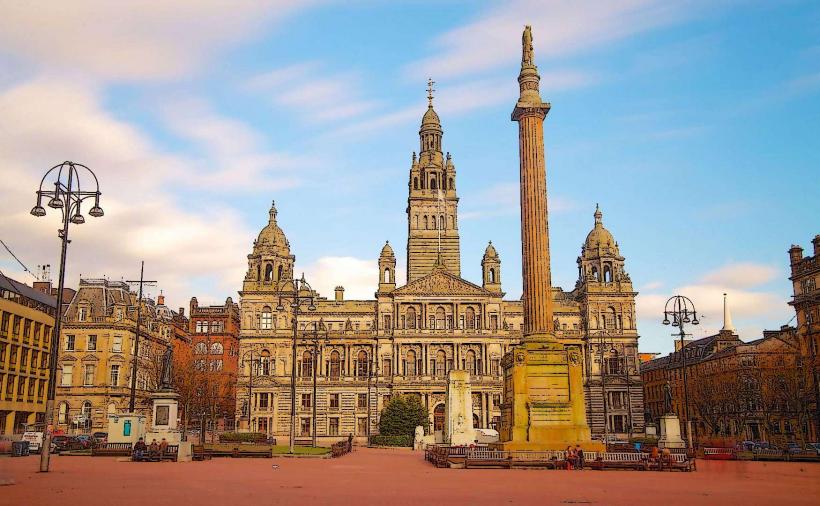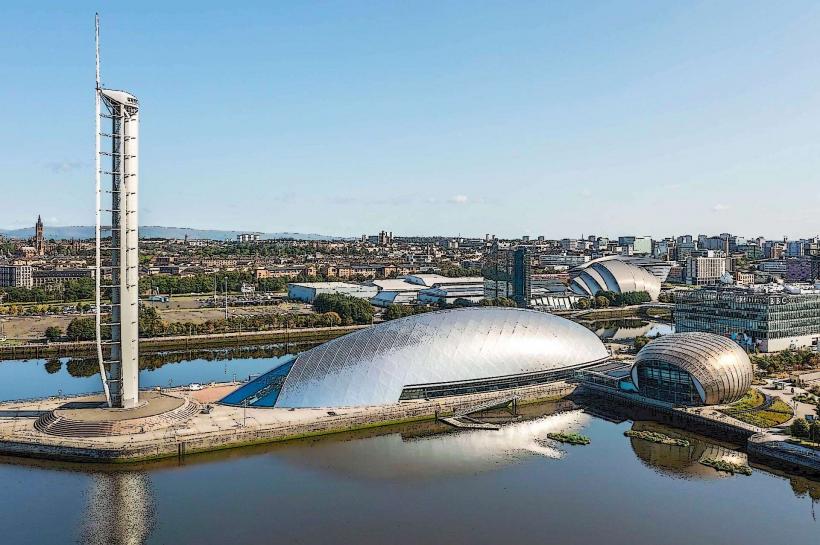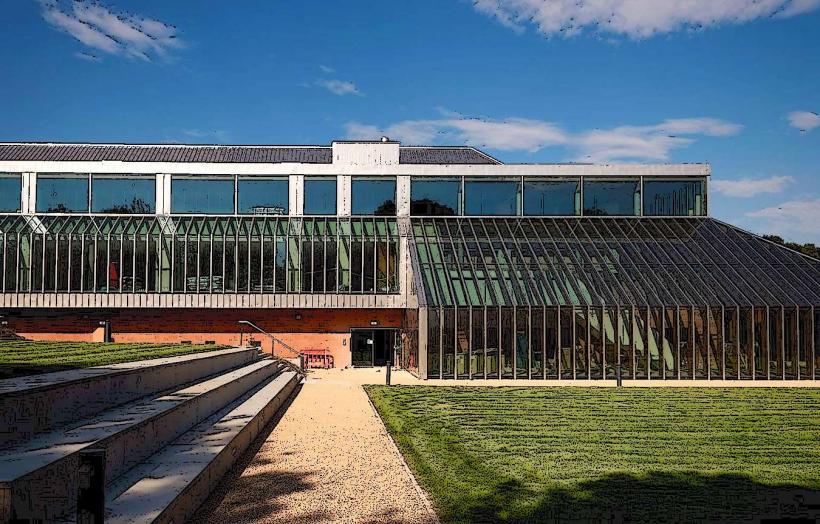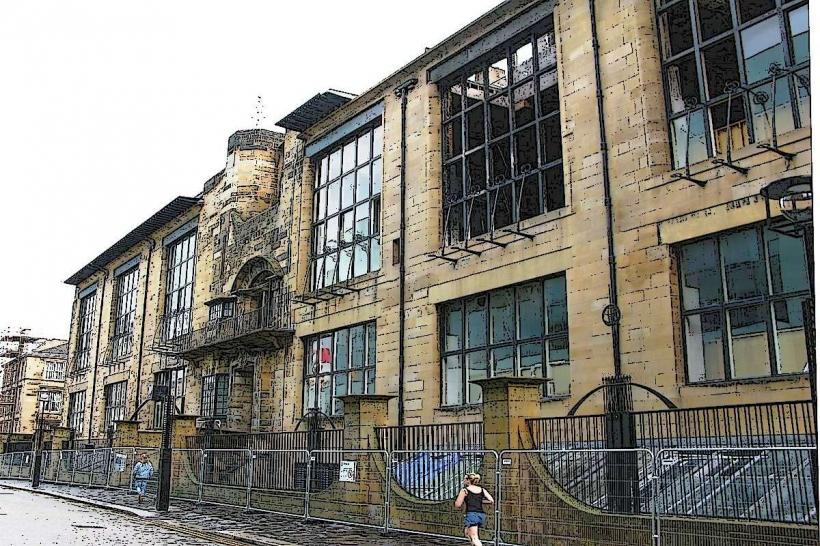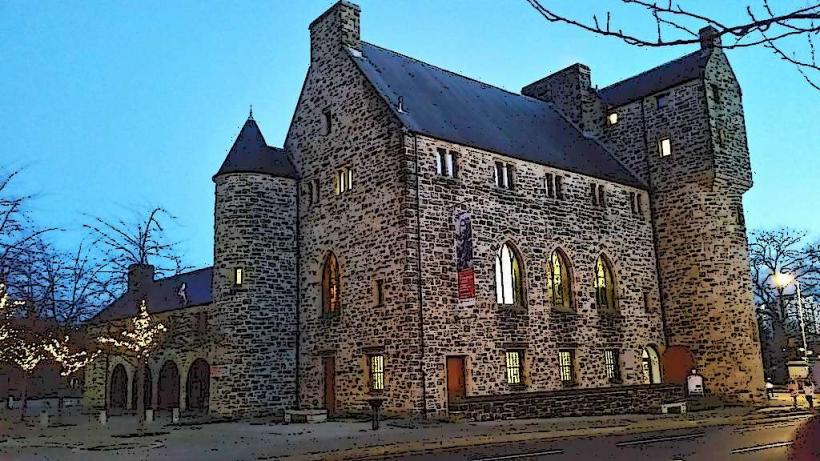Information
Landmark: NecropolisCity: Glasgow
Country: United Kingdom
Continent: Europe
The Glasgow Necropolis is one of the most important and fascinating historical sites in Glasgow, Scotland. It is an iconic Victorian cemetery located on a hill to the east of Glasgow Cathedral, providing both a historical glimpse into the city’s past and a stunning panoramic view of the city itself. With its impressive architecture, grand monuments, and notable inhabitants, the Necropolis is not just a burial ground but also a place of artistic and architectural interest. Here's a detailed overview of the Glasgow Necropolis, including its history, design, notable monuments, and cultural significance.
History and Origins
Foundation and Early Development:
- The Glasgow Necropolis was established in 1831 by the Glasgow Cemetery Company, founded by local merchants and philanthropists in response to the growing need for burial spaces as the city expanded during the Industrial Revolution.
- At that time, Glasgow was experiencing rapid industrial growth, which led to an increase in population. As the city's existing churchyards and burial grounds became overcrowded, there was a need for a larger, more organized cemetery.
- The Necropolis was designed as a "garden cemetery", inspired by European models of cemeteries such as the Père Lachaise Cemetery in Paris. Its design was intended to offer a peaceful and picturesque final resting place, with elaborate tombs, scenic paths, and landscaped grounds.
Location and Significance:
- The Necropolis was built on Cathedral Hill, just to the east of Glasgow Cathedral. The site was chosen for its prominent location and elevated position, which provided striking views of the surrounding city.
- It was intended as the burial site for the city’s elite—wealthy merchants, industrialists, and professionals—who wanted their final resting places to reflect their status and success. Over time, however, the cemetery became home to people from all walks of life, with a wide range of monuments and graves.
Cultural and Religious Context:
- The Necropolis was created in a period of increasing interest in public burial spaces and cemetery art. It was part of a wider movement that sought to create peaceful, landscaped environments for the deceased, influenced by Romantic ideals of nature and death.
- While the cemetery was initially intended to serve the Protestant community, it eventually became open to people of all faiths, reflecting the diversity of Glasgow's population.
Design and Layout
Architectural Style and Monuments:
- The Necropolis is known for its stunning Victorian architecture, which includes a wide range of neoclassical, Gothic, and Egyptian Revival designs. The cemetery contains over 3,500 monuments, many of which are intricately designed and decorated with symbolic elements, such as angels, skulls, and wreaths.
- One of the most iconic features of the Necropolis is the Monument to John Knox, a towering obelisk that stands at the highest point of the cemetery. The monument is dedicated to John Knox, the founder of the Church of Scotland, and was erected in 1825 before the cemetery's official opening. It serves as a focal point for visitors and is one of the most recognizable structures in the cemetery.
- The tombs and graves are often elaborate, reflecting the wealth and status of those buried there. Many of the monuments are made from granite and marble, with finely carved inscriptions and relief sculptures.
Layout and Pathways:
- The layout of the Necropolis is designed to guide visitors through a series of paths and walkways that meander through the hilly landscape. The cemetery is divided into different sections, with grand family vaults and mausoleums arranged along the paths.
- The cemetery’s design creates a sense of serenity, with the landscaping incorporating trees, gardens, and hedges that soften the structure’s formality and create a peaceful atmosphere.
- Visitors are encouraged to take their time exploring the site, as the many monuments and statues are arranged to create an open, reflective space. There are also several viewpoints within the cemetery that provide fantastic vistas of Glasgow Cathedral and the city beyond.
Notable Figures Buried at the Necropolis
The Glasgow Necropolis is the final resting place of many notable individuals from the city’s history. Among those buried there are prominent figures from Glasgow’s industrial, cultural, and civic life, as well as various architects, merchants, politicians, and philanthropists.
John Knox:
- As mentioned earlier, one of the most famous monuments in the Necropolis is dedicated to John Knox, a 16th-century Scottish Reformer and the founder of the Church of Scotland. His influence on Scottish religious and political life is commemorated by the John Knox Monument, an obelisk that towers above the cemetery.
William Miller:
- William Miller was a prominent Glasgow merchant and philanthropist who played a significant role in the development of the city’s infrastructure. His elaborate tomb features a large figure of Justice holding a scales of balance, symbolizing his contributions to the city.
Sir William Collins:
- Sir William Collins, a notable figure in Glasgow’s publishing industry and a major philanthropist, is buried in the Necropolis. He is remembered for his contributions to the Collins publishing house, which was one of the largest publishing companies in the UK at the time.
James Young:
- James Young was a pioneering industrialist and chemist, credited with the development of the first process for extracting paraffin oil from coal. His work contributed to the development of the oil industry in the 19th century, and his family’s vault is located in the Necropolis.
William Hume:
- William Hume was a Glasgow-based architect and a key figure in the design of several important buildings in the city during the Victorian era. His monumental tomb in the Necropolis showcases his own architectural style, incorporating elements of the Gothic Revival.
Other Notable Figures:
- Many other notable figures are buried in the Necropolis, including industrialists, merchants, doctors, lawyers, and civic leaders, all of whom played significant roles in shaping Glasgow's transformation from an industrial city to a modern metropolis.
Features and Monuments
John Knox Monument:
- The John Knox Monument is perhaps the most significant and distinctive monument in the Necropolis. This tall obelisk commemorates John Knox, a pivotal figure in the Protestant Reformation in Scotland, and marks the highest point in the cemetery. The monument, completed in 1825, is a commanding structure, visible from many parts of the cemetery and the surrounding city.
Family Vaults and Mausoleums:
- The Necropolis is known for its elaborate family vaults and mausoleums, where the wealthiest Glaswegians were interred. These structures were designed to serve as grand monuments to the deceased and their families, with many displaying intricate carvings and sculptural details. Some of the mausoleums are built in the style of Greek temples, while others incorporate Gothic elements or Egyptian Revival designs.
Angel Monuments:
- Many of the graves are adorned with angel statues or figures, reflecting the Victorian fascination with death, mourning, and the afterlife. These angelic figures, often depicted in prayer or with outstretched wings, represent the transition of the soul from life to death and serve as symbols of peace and eternity.
Other Noteworthy Monuments:
- The Necropolis also features several smaller but no less striking memorials, including a Gothic cross, a draped urn, and a stone obelisk dedicated to various individuals from Glasgow's past. The variety of styles and symbolism makes the cemetery a treasure trove for those interested in funerary art and architecture.
Visitor Experience and Access
Visiting the Necropolis:
- The Glasgow Necropolis is open to the public and can be visited year-round. It is a popular spot for history enthusiasts, architecture buffs, and those interested in exploring Glasgow's past. Many visitors come to enjoy the peaceful environment and stunning views over the city.
- The cemetery is located just a short walk from Glasgow Cathedral, making it easy to combine visits to both sites. The Necropolis is also well-connected by public transport, with nearby bus and subway stations offering convenient access.
Guided Tours and Education:
- The Necropolis offers guided tours led by knowledgeable guides, who can provide deeper insights into the history of the cemetery, the people buried there, and the symbolism of the monuments. The tours are a great way to learn about the rich history of Glasgow and its prominent citizens.
- Educational events and talks are also occasionally held at the Necropolis, and the site serves as an important resource for historians and cultural heritage enthusiasts.
Photography and Reflection:
- The Necropolis is a favorite spot for photographers, offering a unique combination of historic architecture, beautiful landscapes, and sweeping views of Glasgow. The atmosphere of quiet reflection, combined with the grandeur of the tombs, makes it a striking place to visit for anyone interested in history, art, or photography.
Conclusion
The Glasgow Necropolis is a remarkable place, rich in history, art, and culture. It is not just a cemetery but also a historical park and art gallery in its own right, showcasing the Victorian era’s fascination with death, memorialization, and the afterlife. With its diverse monuments, stunning views, and deep connection to Glasgow’s past, the Necropolis is a must-see for anyone interested in the city's history, its people, and its architectural heritage. Whether you're walking along its scenic paths, admiring the craftsmanship of the tombs, or reflecting on the lives of those who helped shape Glasgow, the Necropolis offers a powerful and thought-provoking experience.

